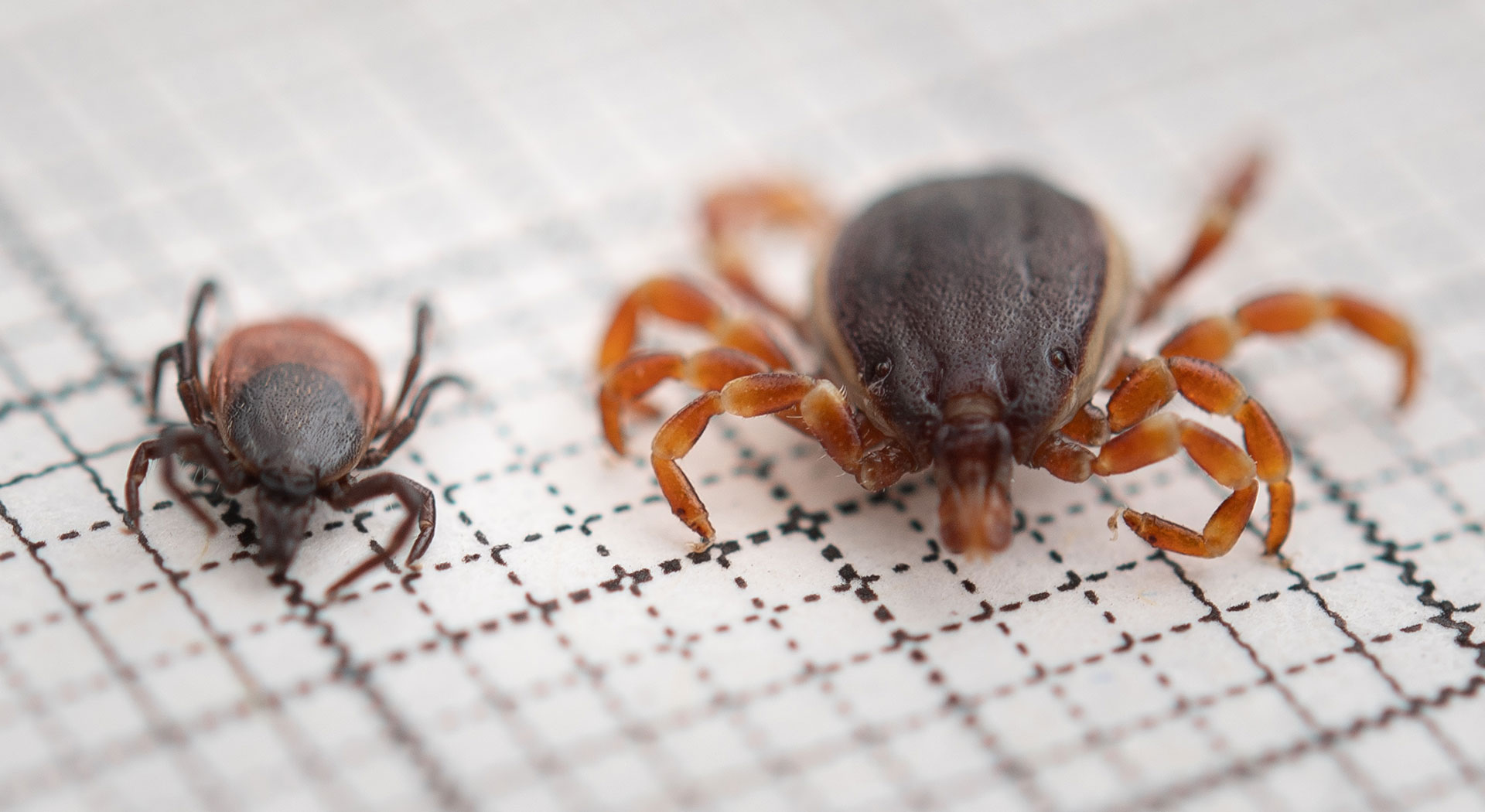Ticks are annoying, disgusting – and in more and more places also really dangerous. And this danger is becoming more real.
Tick bites can transmit diseases such as tick-borne encephalitis (TBE). The virus can attack the meninges and the central nervous system. Every year, several hundred people in Germany suffer from it.
More and more TBE risk areas
The risk of TBE infection exists primarily in Bavaria, Saxony, Baden-Württemberg, Hesse and Thuringia. Individual risk areas are also located in Saarland, Rhineland-Palatinate, Lower Saxony and now also in Brandenburg. It has to be every year RKI in his Epidemiological Bulletin include new risk areas. In 2024, two new ones were added, the city district of Frankfurt (Oder) and the Altenburger Land in Thuringia. This means that 180 districts are now designated as TBE risk areas.

In TBE risk areas, 0.1 to 5 percent of ticks carry the virus. Of the people who are bitten by a TBE-infected tick, around one in three become ill.
Good idea: TBE vaccination
Once the disease has broken out, it can no longer be stopped with medication. Luckily there is a vaccinationwhich is strongly recommended for TBE risk areas. Loud RKI 99 percent of those suffering from TBE were not vaccinated or not sufficiently vaccinated.
Ticks also transmit Lyme disease everywhere in Germany. Two to six percent of people become infected with Borrelia through a bite – and these bacteria can cause threatening infectious diseases. Lyme disease is the most common. Typical sign: Redness at the bite site that slowly spreads (wandering redness). Then it's time to go to the doctor. As a bacterial disease, Lyme disease can be easily treated with antibiotics, especially in the early stages.
900 species of bloodsuckers
There are more than 900 species of ticks worldwide. There are currently around twenty of them in Germanyfor example hedgehog tick, Sheep tick or the (originally native to southern Europe) Riparian forest tick. Due to the changed climate conditions, new species are threatening to immigrate to Germany.
Dangerous new arrival: Hyalomma tick
One of these bloodsuckers has been appearing more and more in recent years and could feel even more comfortable in our latitudes with increasingly dry, hot summers: the Hyalomma tick.
Don't miss anything with the WWF newsletter!
The super ticks in Germany
These super ticks are significantly larger than the normal domestic bloodsuckers – namely three times larger at up to two centimeters. Particularly unpleasant: Hyaloma are hunting ticks. Unlike domestic ticks, the Hyalomma does not wait for the host, but hunts specifically. They can cover hundreds of meters and seem to particularly target horses.
Hyalomma is also at home in holiday destinations
It was probably introduced by migratory birds. It has already been detected in Baden-Württemberg, Rhineland-Palatinate, Hesse, North Rhine-Westphalia, Schleswig-Holstein and Lower Saxony. The trend is clearly increasing. Holidaymakers beware: According to the European Health Authority, the giant ticks are ECDC also found in large parts of Italy, Portugal, Spain, southern France, Croatia and Greece.

Some have already been proven to have overwintered in Germany. However, that doesn't mean that they will also become native to our latitudes. Let's hope not: these ticks are not only disgusting, but can also cause diseases like Tick spotted fever and Crimean-Congo fever (CCHF) transmitted. Of the Hyalomma specimens found in 2019, almost every second one carries the typhus pathogen. Fortunately, Crimean-Congo fever has not yet been found.
Better protection against ticks!
Nevertheless, you are of course well advised to protect yourself. The German Society for Neurology recommends wearing closed clothing when out in nature. And you should avoid crawling around in the undergrowth – that's where ticks like to lurk most. In the short term, tick repellents can keep the annoying bloodsuckers away. You can read how to remove a tick (and what to do with the tick) here. Time is also of the essence.
Please send in ticks!
But what we can definitely do is to help science: the University of Hohenheim and the Robert Koch Institute are asking for what they have found Send in Hyalomma ticks – dead or alive. So if someone discovers a copy: stick it on paper with adhesive strips and stick it to that RKIZBS1-Zecke, Seestr.10, 13353 Berlin. Important: Enclose a note with the location and date of discovery. Anyone who has seen one of these giant ticks but not caught it can also help: simply send an email with the observation to tropenzecken@uni-hohenheim.de.
Science says thank you! This allows scientists to better assess the spread and also develop countermeasures.
Follow us on social media:


